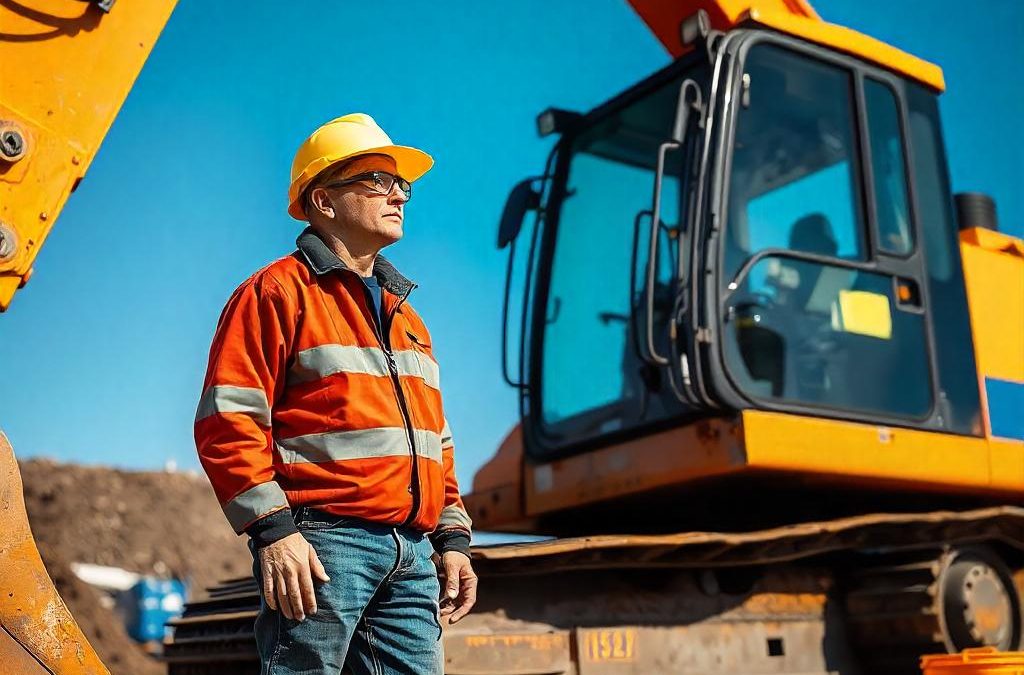Mini-construction machinery is a vital part of any construction project. Large amounts of soil or building materials must be moved or used to create landscapes for houses or paving—an impossible task without the ideal equipment.
Mini-construction machinery is also used to move building materials for industrial use. However heavy machinery poses a high risk for accidents and injuries on the project site.
Let’s talk about the Importance of Heavy Machinery Safety
According to a study, about 20% of the 5,333 worker deaths reported in 2019 were on construction sites.
Main causes:
Falls: Falling from a height or off construction machinery
Struck by an Object: Hitting by a moving or free-falling object
Electrocutions: Being accidentally struck by electricity
Caught In-Between: Being caught between multiple construction equipment or materials
3 of the above 4 causes occur occasionally around or on heavy equipment. Therefore, construction companies must acknowledge the importance of heavy equipment safety.
10 Heavy Machinery Operator Safety Tips
There are various types of heavy machinery. Each machinery type poses its own type of risk. Here are 10 basic heavy equipment operator tips to help keep your operators safe.
Brief Inspection of Equipment Before Use
Heavy machinery workers should be responsible for examining their assigned machines before each work period. The inspection starts with a ground-level walkaround and includes a fluid-level check looking for loose parts, leaks, or any other possible issues. These problems can then be resolved before they develop into fatal accidents.
Maintain 3-Point Contact
Many falls occur due to unsafe climbing on heavy equipment. Operators should always keep 3 points of contact when climbing on or off any heavy machinery. This means at least 2 hands or feet should be in a safe spot while moving one hand or foot in climbing up or down.
Must Wear Seatbelt
Heavy equipment usually works on rough terrain and can throw an operator from the machine, causing serious injuries and sometimes a fatal accident. Always wear a seatbelt when working on any piece of heavy machinery, even when only shifting it from one location to another.
Watch for Blind Spots
Large equipment has multiple blind spots. This creates a lot of risks for inadvertently crushing people or objects during movement. Always Know your blind spots when working on any piece of heavy equipment and watch them regularly for workers moving in surroundings or adequate clearance around others machines.
Know Your Limits
Working on heavy equipment can be physically demanding. Intense heat or severe cold weather conditions can also affect an operator, causing fatigue and slower response. Know your limits as an operator and stop operating any machinery when you feel tired, sick, emotionally drained, or otherwise disabled in any way. Do not operate heavy machinery when on medications that could cause sleepiness.
Use Proper Communication Signals
People working on the job site moving around heavy machinery should learn the basic hand signals for use with machinery operators. Use these signals before movement and operation, ask questions, and otherwise make your action known to those around you.
Hire a Spotter
A spotter is a person whose job is to look out for a specific piece of heavy equipment. They help the operator to get clearances, safe operation zones, and conditions, and steer other workers away from the hazard zone. If possible, every piece of heavy equipment working in a construction zone should have a spotter in attendance.
Final Words
Prioritizing safety as a heavy machinery operator is not just about following rules—it’s about fostering a culture of vigilance, responsibility, and respect for the equipment and those around you. By adhering to proper training, conducting regular maintenance checks, staying alert, and using the right safety gear, operators can significantly reduce the risk of accidents and enhance overall job site productivity. Remember, a safe operator is an effective operator, ensuring not only the success of the task at hand but also the well-being of the entire team.

